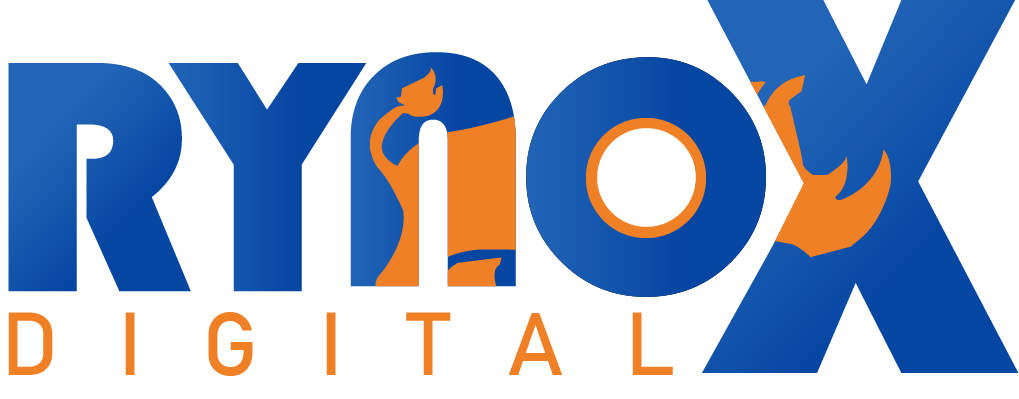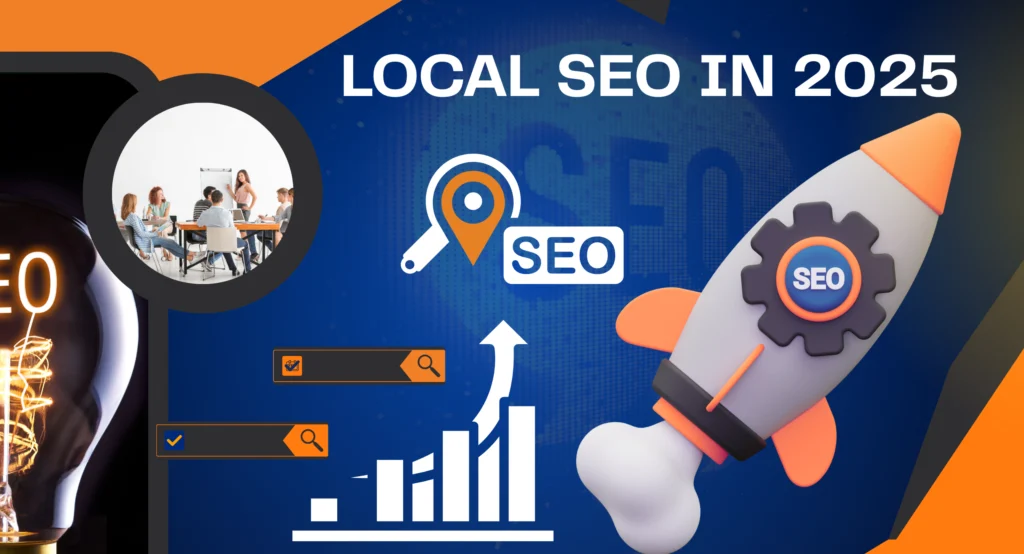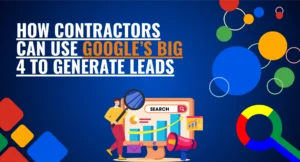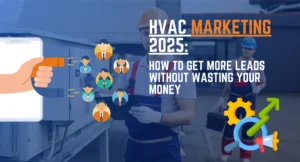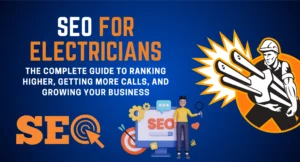Introduction
Why Local SEO Matters in Today’s Digital Landscape
When customers need a product or service, the first place they turn to is no longer a billboard, TV commercial, or even word of mouth — it’s Google. Whether it’s searching for “best pizza near me”, “emergency plumber in Houston”, or “digital marketing agency in my area”, local search has become the lifeline for small businesses. This is where local SEO comes in. Local SEO (local search engine optimization) ensures that your business shows up in front of the right customers at the right time — when they’re actively searching for what you offer in their specific area.
The Growing Power of Local SEO in 2025
The importance of local SEO has grown steadily over the past decade, but in 2025 it has become more critical than ever. Search behavior is shifting rapidly:
- More than 46% of all Google searches already have local intent.
- “Near me” searches have grown by over 500% in the past few years.
- Mobile devices and voice assistants now drive a significant share of these queries.
For small businesses, this means one thing: if you’re not visible in local search results, you’re invisible to a massive portion of your potential customers. Local SEO is no longer optional — it’s the difference between being discovered and being ignored.
Leveling the Playing Field Against Big Competitors
The beauty of local SEO is that it allows small businesses to compete with big brands. Unlike traditional advertising, where corporations can outspend everyone else, local SEO levels the playing field. With a smart local SEO strategy, a small coffee shop can outrank Starbucks in local results, or a neighborhood dental clinic can appear above nationwide healthcare chains when someone nearby searches for “dentist open now”.
By focusing on relevance, proximity, and trust signals, small businesses can win visibility in the same spaces that giant companies dominate — without needing million-dollar budgets.
What This Blog Will Cover
In this article, we’ll explore how local SEO in 2025 can help small businesses not just survive, but thrive against larger competitors. We’ll break down:
- Why local SEO is more important than ever.
- How to optimize your Google Business Profile (GBP).
- The role of localized website content.
- Building reviews and managing online reputation.
- The power of local backlinks and citations.
- Mobile-first and voice search optimization.
- Common local SEO mistakes to avoid.
By the end, you’ll have a clear understanding of how to build a local SEO strategy that positions your business ahead of competitors — even the big ones — in search results.
Why Act Now?
Local SEO is not a “someday” tactic. With search algorithms evolving and competition intensifying, businesses that act now will establish authority, build trust, and capture market share. Those that delay will find it harder and more expensive to catch up later. The future of small business visibility is tied directly to local SEO — and the time to start is today.
Why Local SEO Matters More Than Ever in 2025
The Changing Behavior of Consumers
The way people find businesses has changed forever. Instead of flipping through phone books or relying only on recommendations, today’s customers turn to Google, Maps, and voice assistants to find what they need in seconds. This shift has made local SEO the bridge between businesses and their ideal customers. In 2025, when someone searches for “best mechanic near me” or “coffee shop open now”, they’re ready to buy — and they’ll most likely choose from the top results they see.
The Rise of “Near Me” and Voice Searches
Search trends clearly show why local SEO is more important than ever. “Near me” searches have exploded, growing more than 500% over the past few years. At the same time, voice search has become a daily habit for millions of users. People no longer type just “bakery Boston”; they ask Siri, Alexa, or Google Assistant, “Where’s the best bakery near me that’s open today?” This conversational style changes how businesses need to optimize. Without a strong local SEO strategy, small businesses miss the chance to show up in these voice-powered, intent-driven searches.
Mobile-First World, Local-First Results
Another major factor driving the importance of local SEO in 2025 is mobile usage. Over 60% of all searches now happen on mobile devices, and the majority of those have a local focus. Google knows that when someone is on their phone looking for a service, they need quick, nearby results. That’s why local SEO signals — like proximity, relevance, and reviews — play such a huge role in rankings. For small businesses, being optimized for local search means capturing customers in the exact moment they’re ready to act.
Competing With Big Brands on Local Ground
Unlike national SEO or paid ads, local SEO gives small businesses a real chance to compete with larger corporations. While big brands may dominate national campaigns, Google often prioritizes local relevance. This means that a local flower shop, if optimized correctly, can appear above a global chain when someone nearby searches for “florist open now”. In 2025, local SEO for small businesses is not just an equalizer — it’s a weapon that allows them to punch above their weight.
The ROI of Local SEO in 2025
The return on investment makes local SEO one of the smartest strategies available to small businesses today. Unlike traditional ads that disappear the moment you stop paying, local SEO builds long-term visibility. When optimized properly, your business shows up consistently for high-intent searches without ongoing ad spend. This means more website traffic, more phone calls, and more store visits — all from customers actively looking to buy.
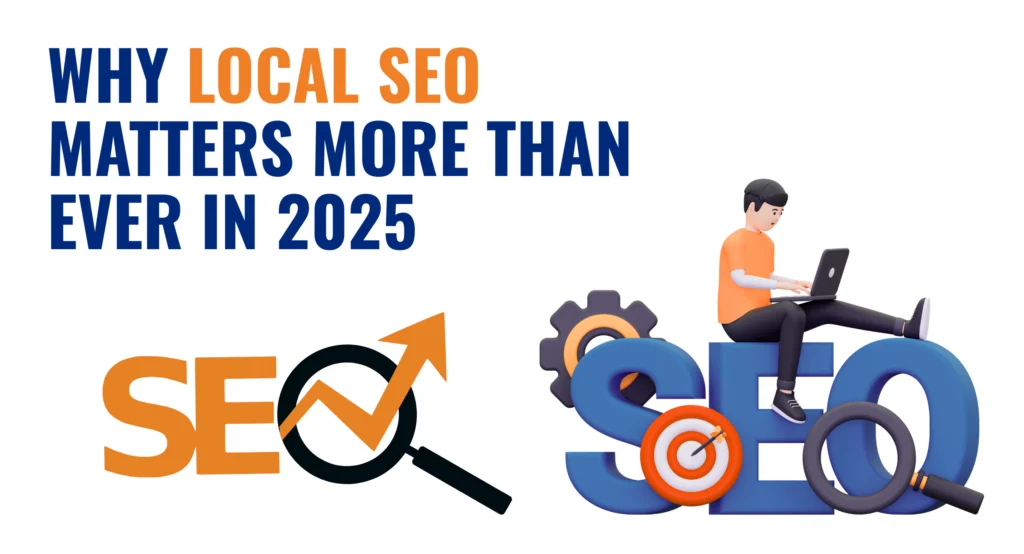
Optimizing Your Google Business Profile (GBP)
Why Google Business Profile Is the Cornerstone of Local SEO
When it comes to local SEO, nothing is more important than your Google Business Profile (GBP). Formerly known as Google My Business, GBP is the listing that appears in Google Maps and the local “3-pack” results when users search for businesses near them. For many small businesses, this profile is the very first impression potential customers will have. A well-optimized GBP can mean the difference between a flood of new inquiries and being invisible online.
The Role of GBP in Local Search Rankings
Google uses your Business Profile as one of the strongest signals for local search ranking. When someone types “best dentist near me”, Google considers three main factors:
- Relevance – How well your profile matches the search query.
- Proximity – How close your business is to the searcher.
- Prominence – How trustworthy and established your business appears (reviews, engagement, activity).
An optimized GBP ensures your business looks relevant, trustworthy, and customer-friendly — which is exactly what Google wants to showcase at the top of results.
How to Fully Optimize Your Google Business Profile in 2025
- Accurate Business Information
- Ensure your Name, Address, and Phone number (NAP) are 100% accurate and consistent across all platforms.
- Choose the most relevant business category and add secondary categories where appropriate.
- High-Quality Photos and Videos
- Businesses with photos receive 42% more requests for directions and 35% more website clicks.
- Upload interior, exterior, team, and product/service images regularly.
- Detailed Business Description
- Write a keyword-rich description that explains what your business does and what sets you apart.
- Naturally include your main services and target locations to support your local SEO strategy.
- Customer Reviews and Ratings
- Actively encourage satisfied customers to leave reviews.
- Respond to every review — both positive and negative — to show engagement and build trust.
- Use All Available Features
- Add services, products, menus, or pricing if applicable.
- Use the Q&A section to answer common customer queries.
- Post updates regularly (offers, events, news) to keep your profile fresh.
- Enable Booking and Messaging
- Many 2025 updates to GBP include integrations for direct booking, reservations, or messaging.
- Enabling these features makes it easy for customers to act without even leaving the profile.
Why GBP Optimization Drives More Conversions
Optimizing your Google Business Profile isn’t just about search visibility — it’s about conversions. A strong GBP builds trust before customers even visit your website. They can see reviews, photos, services, and contact details instantly, making it easier to choose your business over competitors. In fact, businesses with optimized GBPs are significantly more likely to attract calls, visits, and direct bookings.
Action Steps for Small Businesses
- Audit your current Google Business Profile to ensure accuracy.
- Upload at least 5–10 professional photos that showcase your business.
- Create a system for regularly requesting customer reviews.
- Use posts and Q&A to engage with potential customers.
- Track insights in GBP to measure views, clicks, and calls.
Building Localized Website Content
Why Localized Content Strengthens Local SEO
While your Google Business Profile helps you appear in maps and the local 3-pack, your website content is the foundation of long-term local SEO success. Google rewards websites that show clear relevance to a searcher’s location. That means small businesses must create content tailored not only to their services but also to the communities they serve.
The Role of Local Landing Pages
One of the most effective tactics in a local SEO strategy is building localized landing pages. Instead of having one generic “Services” page, businesses can create individual pages for each location or service area. For example, a plumbing company in Texas could have separate pages for “Plumber in Houston”, “Plumber in Dallas”, and “Plumber in Austin”. Each page would be optimized with local keywords, unique content, and customer-focused messaging.
This approach helps capture searches from people in specific areas, dramatically improving local search visibility.
Using Local Keywords Naturally
Localized content means going beyond broad terms like “best dentist”. To succeed in local SEO, small businesses must incorporate city, neighborhood, and regional keywords naturally throughout their website. For example:
- “Family dentist in Houston Heights”
- “24/7 emergency locksmith in Chicago”
- “Organic coffee shop in downtown Denver”
By weaving these terms into titles, headings, and meta descriptions, businesses send strong signals to Google about their local relevance.
Blogging About Local Topics
Another powerful way to boost local SEO is through blog content focused on community-related topics. Writing posts about local events, sponsorships, or community initiatives shows Google — and your audience — that your business is deeply connected to the area.
Examples of localized blog ideas:
- “Top 10 Summer Events in Austin You Can’t Miss”
- “How Our Houston Plumbing Team Supports Local Schools”
- “5 Best Parks for Families in Denver (Recommended by Our Coffee Shop Staff)”
Not only do these articles attract organic search traffic, but they also position your business as an authority and a trusted member of the local community.
Benefits of Localized Content for Small Businesses
- Higher visibility in local search results – More chances to rank for neighborhood-specific queries.
- Better engagement – Customers connect more with businesses that show they understand their community.
- Increased trust – Local content builds credibility and loyalty with customers who see you as “one of them.”
- SEO authority – Fresh, relevant content signals to Google that your site is active and authoritative.
Action Steps for Building Localized Content
- Audit your website and identify opportunities for local landing pages.
- Add city/region-specific keywords to meta titles, descriptions, and H1s.
- Publish at least one blog post per month focused on local events or community news.
- Create service area pages for every neighborhood or city you target.
- Encourage staff or customers to contribute local stories or testimonials.
Earning Reviews and Managing Online Reputation
Why Reviews Are Critical for Local SEO
In 2025, online reviews are one of the strongest ranking signals in local SEO. When customers search for a business, they don’t just look at your name or services — they immediately notice your star rating and what others are saying about you. Google, Yelp, Facebook, and industry-specific review sites all feed into how trustworthy your business appears.
Google’s algorithm factors reviews into local rankings because they reflect real customer experiences. A business with dozens of 5-star reviews and active responses is more likely to show up in the local “3-pack” than one with only a few outdated reviews. In other words, reviews are not just about reputation — they directly impact your visibility in local SEO results.
The Psychology of Reviews in Customer Decisions
Studies show that 93% of consumers read online reviews before making a purchase. Even one negative review can influence decisions, while consistent positive feedback builds trust instantly. Customers treat online reviews like modern-day word of mouth, and in 2025, this trust factor is stronger than ever.
For small businesses, this means reviews aren’t optional. They’re a core part of your local SEO strategy and a powerful driver of conversions.
How to Encourage Customers to Leave Reviews
Getting reviews requires a proactive approach. Most satisfied customers won’t leave a review unless they’re asked, so businesses must make the process easy and natural. Some strategies include:
- Ask at the right time – After a successful purchase or service completion.
- Automated follow-ups – Use email or SMS reminders with direct links to your Google Business Profile.
- Incentivize ethically – Offer small thank-you gestures like discounts or loyalty points (avoid “buying” reviews, which violates platform policies).
- Train staff – Encourage frontline employees to remind happy customers to share their feedback.
Responding to Reviews (Both Positive and Negative)
Responding to reviews is just as important as earning them. Google rewards businesses that actively engage with customer feedback.
- Positive reviews – Thank the customer personally, mention their name if possible, and reinforce their satisfaction.
- Negative reviews – Stay professional, acknowledge the issue, and offer a solution. A well-handled negative review can actually strengthen trust, showing potential customers that you care about resolving problems.
Tools for Reputation Management in 2025
Managing reviews across multiple platforms can be overwhelming, but tools like Birdeye, Podium, and Yext simplify the process. These platforms let you:
- Monitor reviews across all sites in one dashboard.
- Automate review requests.
- Receive alerts when new reviews are posted.
- Analyze sentiment to identify strengths and areas for improvement.
The SEO and Conversion Benefits of Reviews
- Higher rankings – More reviews = stronger signals to Google.
- Increased clicks – Profiles with high ratings attract more clicks.
- Improved conversions – Customers trust peer feedback more than brand messaging.
- Customer loyalty – Engaged businesses earn repeat customers through transparent communication.
Action Steps for Businesses Today
- Claim and verify your Google Business Profile to collect reviews.
- Create a system for requesting reviews after each transaction.
- Respond to every review within 24–48 hours.
- Monitor your online reputation with dedicated tools.
- Train your team to see reviews as a growth opportunity, not just feedback.

Leveraging Local Backlinks and Citations
Why Backlinks and Citations Matter in Local SEO
When it comes to local SEO, backlinks and citations act as “trust signals” for search engines. A backlink is simply another website linking to yours, while a citation is any mention of your business’s Name, Address, and Phone number (NAP) online. Together, these confirm to Google that your business is credible, relevant, and connected to the local community.
Think of backlinks and citations as digital word of mouth. If reputable local sites — such as news outlets, chambers of commerce, or local directories — are linking to or mentioning your business, Google views your brand as authoritative. This boosts your local search rankings, helping you appear higher in both the map pack and organic results.
The Role of Local Backlinks in SEO Success
Not all backlinks are created equal. A link from a local newspaper or a neighborhood blog carries far more weight for local SEO than a random link from a global site. That’s because Google values local relevance. By earning backlinks from within your community, you show that your business is an integral part of the area you serve.
Ways to build strong local backlinks include:
- Partnering with local organizations – Sponsor events, charities, or sports teams and request a link in return.
- Networking with local bloggers – Offer expert advice or guest posts on community blogs.
- Press releases – Share newsworthy updates with local media outlets.
- Collaborations with nearby businesses – Cross-promote and exchange links with non-competing local businesses.
The Importance of NAP Consistency in Citations
Citations are equally vital for local SEO strategy. A citation doesn’t always include a link, but it confirms your business’s existence online. The key factor here is NAP consistency. If your business name, address, or phone number differs across directories (for example, “123 Main St.” vs. “123 Main Street”), search engines may get confused and lower your credibility.
Important places to build and maintain citations:
- Google Business Profile (GBP)
- Yelp
- Bing Places
- Yellow Pages
- Industry-specific directories (law firms, medical practices, restaurants, etc.)
- Local chambers of commerce or trade associations
How Backlinks and Citations Improve Local SEO Rankings
Both backlinks and citations influence Google’s evaluation of prominence, one of the three pillars of local SEO (alongside relevance and proximity). More citations and quality local backlinks = higher prominence, which signals trust and authority. As a result, your business is more likely to appear in top local search results and the coveted “map pack.”
Action Steps to Strengthen Backlinks and Citations
- Audit your current NAP listings across major directories.
- Correct any inconsistencies to ensure accuracy.
- Build relationships with local bloggers, news outlets, and community sites.
- Create locally focused content worth linking to (guides, event roundups, resources).
- Regularly monitor your backlinks and citations using tools like Moz Local, BrightLocal, or Whitespark.
Voice Search & Mobile Optimization for Local SEO
Why Voice Search Is Reshaping Local SEO
The way people search is evolving rapidly. Instead of typing short queries like “dentist Houston”, users now ask conversational questions such as “Where’s the best dentist near me open right now?”. This shift toward natural, spoken queries has made voice search optimization a vital part of local SEO.
By 2025, more than half of all searches are expected to be voice-based, with many tied to local intent. For small businesses, this means local SEO strategies must adapt to capture these high-intent customers.
Conversational Keywords and Natural Language
Optimizing for voice search requires a different approach than traditional SEO. Instead of focusing only on short keywords, businesses must target conversational, long-tail phrases that mirror how people actually speak. Examples include:
- “What’s the best Italian restaurant near me?”
- “Who installs air conditioners in Dallas?”
- “Where can I find a 24-hour pharmacy in Chicago?”
Adding FAQ sections to your website, writing content in a Q&A format, and using natural language throughout your site all help align with how voice searchers phrase their queries. This type of optimization strengthens your local SEO strategy while also improving overall user experience.
Mobile-First World = Local-First World
Voice search growth is tied directly to mobile usage. Over 60% of searches now happen on smartphones, and most of those have local intent. Google has also shifted to mobile-first indexing, meaning your mobile site is the version used to evaluate rankings.
If your site isn’t mobile-friendly, you’ll not only frustrate users but also harm your local SEO rankings. A slow-loading or poorly designed mobile site can drive potential customers straight to competitors.
Key Factors for Mobile Optimization in Local SEO
- Fast loading speed – Aim for under 3 seconds. Use tools like PageSpeed Insights to measure and improve performance.
- Responsive design – Ensure your site looks and functions perfectly on all devices.
- Clickable calls-to-action (CTAs) – Make phone numbers, maps, and booking buttons easy to tap.
- Clear local signals – Prominently display your business address, hours, and contact info.
- Schema markup – Add structured data to help Google understand your local relevance.
The Power of “Near Me” Searches
One of the strongest connections between mobile and local SEO is the rise of “near me” searches. People on the go want immediate solutions, and Google prioritizes results that are both close in proximity and optimized for local SEO. Small businesses that optimize for these queries with accurate location data, updated Google Business Profiles, and consistent NAP information can capture a huge share of ready-to-buy customers.
Action Steps for Voice and Mobile Optimization
- Add FAQ sections to target conversational queries.
- Optimize your site for mobile-first indexing (fast, responsive, user-friendly).
- Include click-to-call buttons and easy navigation.
- Use schema markup for local business information.
- Test voice queries on Siri, Alexa, and Google Assistant to see how your business appears.
Common Local SEO Mistakes Small Businesses Make
Why Avoiding Mistakes Matters in Local SEO
For small businesses, local SEO is one of the most powerful ways to attract customers. However, many owners unknowingly make mistakes that hurt their visibility in local search results. The good news? Most of these errors are avoidable with the right local SEO strategy. By understanding common pitfalls, businesses can correct them early and gain a significant competitive advantage.
Mistake 1: Ignoring Google Business Profile (GBP)
One of the most common mistakes is failing to claim or optimize a Google Business Profile. An incomplete or outdated profile reduces your chances of appearing in the local 3-pack and Google Maps results. Missing information, old phone numbers, or incorrect hours create confusion and drive customers away. Since GBP is the foundation of local SEO, neglecting it is like leaving money on the table.
Fix: Claim and verify your GBP, fill in every field, upload updated photos, and post regularly.
Mistake 2: Inconsistent NAP Information
NAP stands for Name, Address, and Phone number, and consistency across the web is crucial for local SEO rankings. If your business details differ across directories, Google may view your business as less trustworthy. For example, “123 Main Street” on one listing and “123 Main St.” on another can cause confusion.
Fix: Audit all directories, listings, and citations to ensure 100% consistency.
Mistake 3: Overlooking Online Reviews
Many small businesses underestimate the power of reviews. Having few or no reviews signals to Google — and customers — that your business may not be credible. Worse, ignoring negative reviews makes you look unprofessional. Since reviews are a major ranking factor in local SEO strategy, not prioritizing them is a costly error.
Fix: Encourage customers to leave reviews after each transaction, and respond to all feedback promptly.
Mistake 4: Forgetting About Mobile Optimization
With most local searches happening on smartphones, failing to optimize your website for mobile is a critical mistake. Slow load times, hard-to-click buttons, and poor navigation frustrate users and lower your local SEO performance.
Fix: Ensure your website is responsive, loads in under 3 seconds, and has easy-to-use calls-to-action like click-to-call buttons.
Mistake 5: Using Generic Content Instead of Localized Content
Generic service pages may help with broad keywords but won’t win local rankings. Many businesses fail to create localized content, such as city-specific landing pages or blogs about community events. Without these, your relevance in local search drops significantly.
Fix: Create unique content for each service area, optimize with local keywords, and write blogs that connect with your community.
Mistake 6: Neglecting Backlinks and Citations
Some businesses focus only on their website and GBP but ignore the importance of local backlinks and citations. Without them, your prominence score (a key factor in local SEO) remains low.
Fix: Build local backlinks through partnerships, sponsorships, and press mentions. Audit citations regularly to maintain accuracy.
Conclusion – Winning With Local SEO in 2025
The Power of Local SEO for Small Businesses
The digital world keeps evolving, but one thing is clear: local SEO has become the most effective way for small businesses to compete and grow. In 2025, customers aren’t flipping through directories or relying only on recommendations — they’re searching online, often on their phones, for the nearest and best option. Whether it’s a plumber, restaurant, dentist, or boutique shop, local search is how people discover businesses today.
For small businesses, this is an enormous opportunity. Unlike traditional advertising, where large corporations dominate with massive budgets, local SEO strategy rewards relevance, proximity, and trust. That means a neighborhood business can outrank a national chain simply by optimizing its Google Business Profile, publishing localized content, collecting reviews, and staying consistent across citations.
Turning Challenges Into Competitive Advantages
Yes, local SEO takes effort. It requires time to gather reviews, keep your information consistent, create localized content, and monitor performance. But every step also builds long-term equity. Unlike paid ads that stop the moment you cut the budget, local SEO compounds over time — helping your business stay visible day after day, year after year.
Even better, local SEO aligns directly with customer intent. When someone searches “near me” or asks their voice assistant for a service, they’re ready to act. Appearing in those moments means attracting not just traffic, but high-quality leads who are ready to call, visit, or buy.
Why Now Is the Time to Act
The businesses that act on local SEO today will dominate tomorrow. Waiting until competitors are already ahead will only make catching up harder and more expensive. By starting now — optimizing your Google Business Profile, building citations, and creating localized content — you’ll position your business to capture more customers in 2025 and beyond.
Rynox Digital: Your Partner in Local SEO Success
At Rynox Digital, we understand the challenges small businesses face when competing with larger brands. That’s why we specialize in creating customized local SEO strategies that help you outrank competitors, attract more local traffic, and turn online searches into real-world customers.
If you’re ready to unlock the full potential of local SEO and grow your business in 2025, we’d love to help.
Ready to get found by more local customers?
Partner with Rynox Digital and let’s build a local SEO strategy that puts your business ahead of competitors.
